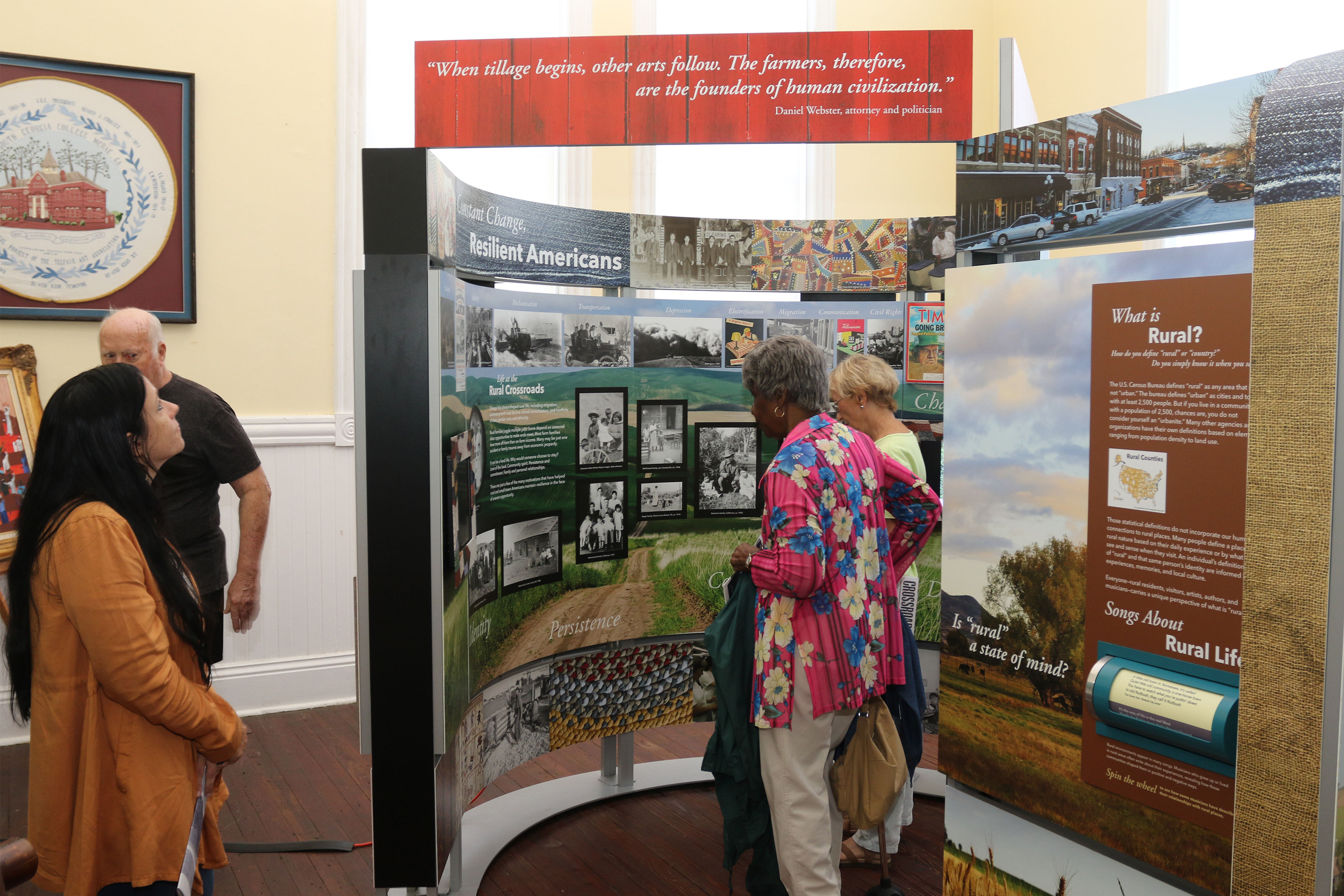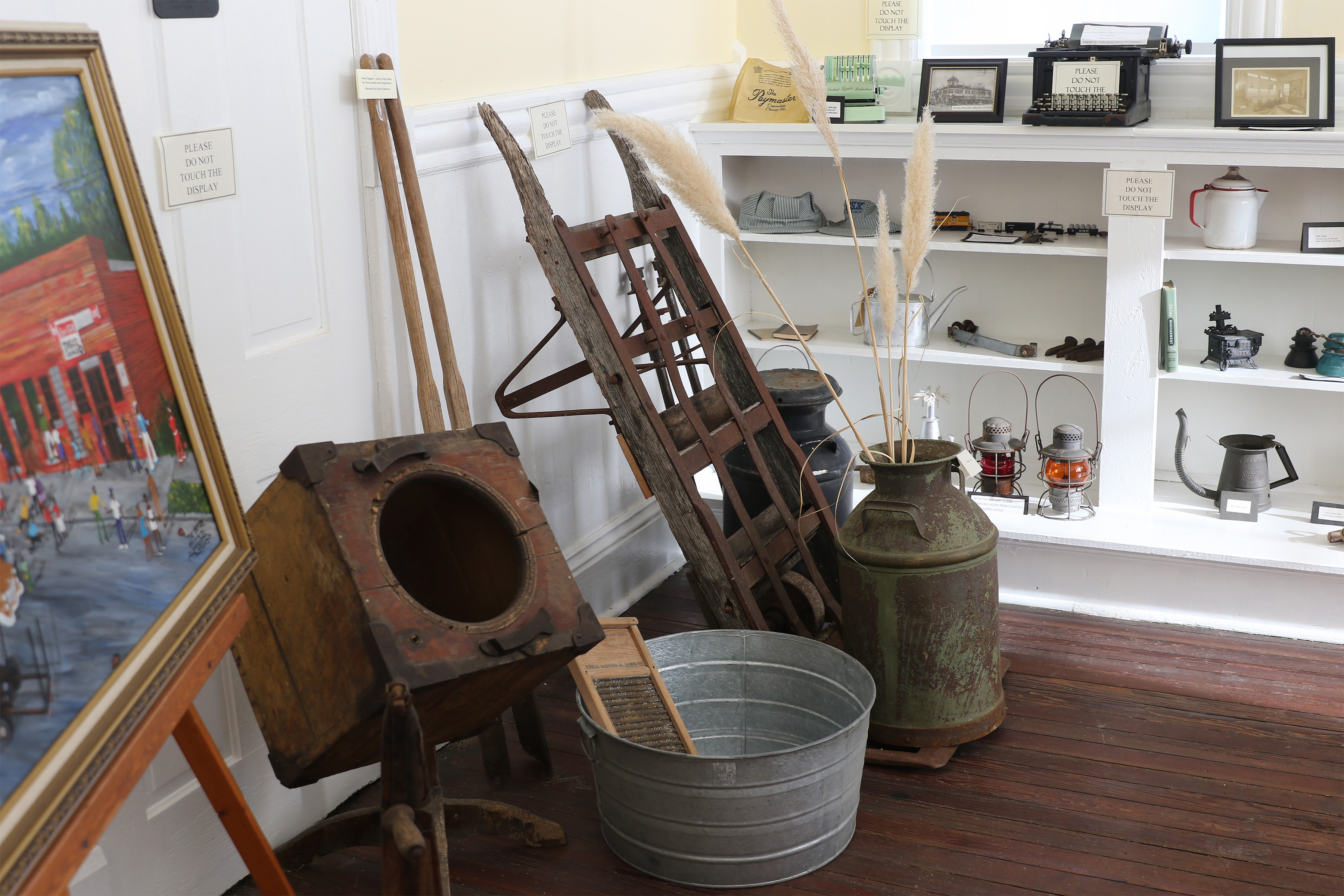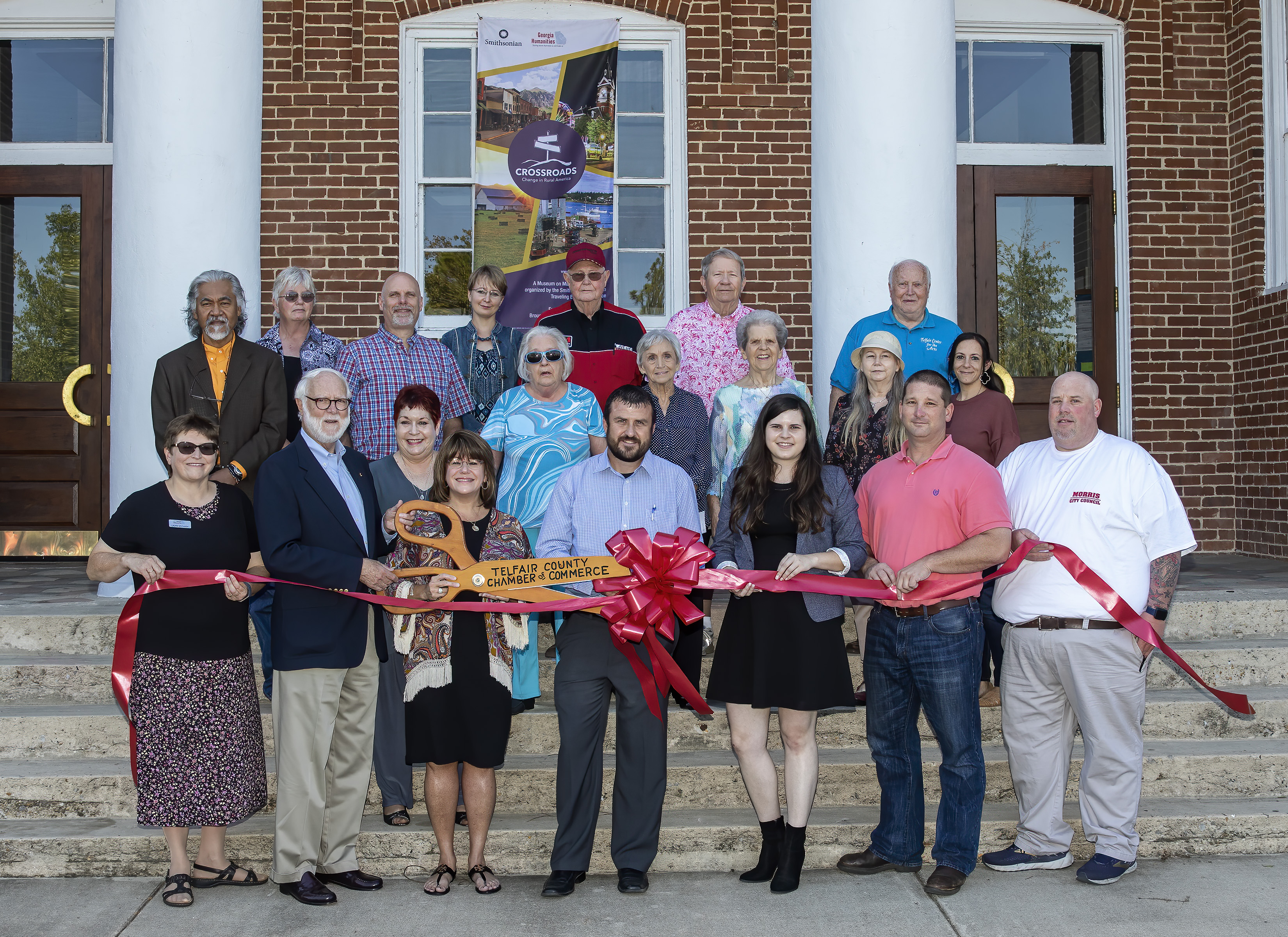McRae-Helena
The cities of McRae and Helena existed side-by-side for more than a century, chartered in 1874 and 1890 respectively. On January 1, 2015, the two cities officially consolidated to become the city of McRae-Helena, the first city-city government consolidation in Georgia since 1921. Known as “The Crossroads City,” McRae-Helena is the convergence point for five state highways and two major rail lines.
October 12 – November 23, 2019
Telfair Center for the Arts
903 W. College Street
McRae-Helena, GA 31037
Monday, 9:00am–3:00pm
Tuesday — Thursday, 3:00–7:00pm
Saturday and Sunday, 1:00pm–6:00pm
In partnership with local organizations, the McRae-Helena community has developed programs to accompany Crossroads. These programs tell local stories of change and resilience and will initiate conversations about what the future holds for Georgia’s rural communities. Some of the events listed below require a ticket. Please contact each host venue for more information.
Michalan Boney Concert
October 12th, 7:00pm
Telfair Center for the Arts, McRae-Helena
A Walk Through Telfair’s Past Cemetery Tour
October 18th, 5:30pm
Oak Grove Cemetery, McRae-Helena
Country Farm Crafter’s Bazaar
October 19th, 9:00am–2:00pm
139 N. Third Avenue, McRae-Helena
A Walk Through Telfair’s Past Cemetery Tour
October 19th, 9:00am
Oak Grove Cemetery, McRae-Helena
120/80 Vocal Band
October 19th, 7:00pm
Telfair Center for the Arts, McRae-Helena
Paddle the Ocmulgee
October 26th, 8:00am
Ocmulgee River – McRae’s Landing, McRae-Helena
Fred McKinnon
October 26th, 7:00pm
Telfair Center for the Arts, McRae-Helena
Karl Hilliard’s Night Birds
November 2nd, 7:00pm
Telfair Center for the Arts, McRae-Helena
Kendra Welch and Lance Stinson
November 9th, 7:00pm
Telfair Center for the Arts, McRae-Helena
Katie Deal’s Crazy for Patsy Cline
November 16, 7:00pm
Telfair Center for the Arts, McRae-Helena
Agriculture Day
November 18th, 9:00am–2:00pm
Telfair Center for the Arts, McRae-Helena
Stories from the McRae-Helena Community
Packing Out the House
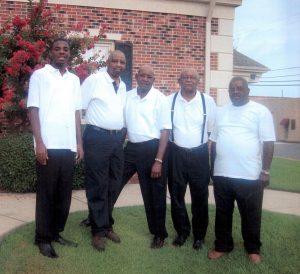
The Five Stars of Harmony is a group renowned for its gospel music in the McRae-Helena area. Photo courtesy of Michael Wesley.
The Five Stars of Harmony is a group renowned for its gospel music in the McRae-Helena area. In 1933, the group was formed in the home of brothers George and Israel Wells and soon began performing at local churches and community events all over the country. Two of the Five Stars of Harmony’s greatest hits include “Give Me My Roses” and “If I Could Just Hold Out Until Tomorrow.”
The group has evolved over the years, adding new members who want to preserve the dearly-held tradition of gospel music. One such person is Michael Wesley. Wesley joined the Five Stars of Harmony at the age of thirteen, and now seventeen years later, Wesley considers himself the last of a dying breed. “I’m an old man trapped in a young man’s body,” he claims. One thing he recalls for certain is that, “if you wanted to pack your house out, you told people the Five Stars of Harmony were gonna be there!”
Preserving the Land
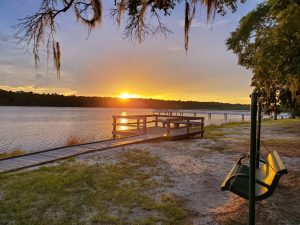
The beach and dock at Little Ocmulgee State Park near McRae-Helena. Photo courtesy of the Friends of Little Ocmulgee State Park.
The natural beauty of Georgia’s diverse landscape has appealed to residents and visitors from its early years. Native Americans and farm families hunted and fished in the forests and rivers, taking sustenance, but also appreciating the beauty they found there.
Today, the land still holds a strong attraction for those living in rural Georgia and for those living in Georgia’s cities who both share an appreciation for the outdoors. Preserving land for future generations has become a priority of national, state, and local governments.
Little Ocmulgee State Park near McRae-Helena traces its origins back to the Civilian Conservation Corps, a program created by the federal government during the New Deal in 1933. The men worked and lived at the site, creating the 256-acre lake off the Little Ocmulgee River. Some of the original structures still stand, although much of the park has been renovated and now includes a sandy beach, walking trails, a golf course, a lodge and restaurant, cabins, and campgrounds.
Post Office Paintings
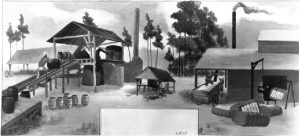
The McRae Post Office mural, titled Turpentine and Cotton, was painted in 1939 by artist Oliver M. Baker. The mural remained in the Post Office until 1952. Photo courtesy of the National Archives.
Post offices have connected small towns and their residents to the rest of the world long before phones and the Internet. During the Great Depression, the Works Progress Administration or WPA formed as part of the New Deal to help job-seekers by providing employment through public-works projects.
Most post office artwork was commissioned through a separate program funded through the Department of the Treasury known as the Section of Painting and Sculpture, later called the Section of Fine Arts. The Section, often confused with the WPA Federal Art Project, was not created to provide economic relief, but instead to create public art to help boost morale in areas hit hard by the Great Depression. It obtained paintings and sculptures through competitions to decorate new federal buildings, primarily post offices and court houses. The program began in 1934 and operated until 1943, awarding approximately 1,400 contracts for art in federal buildings.
One such contract was awarded to the McRae Post Office, built by the WPA in 1935. In 1939, artist Oliver M. Baker was commissioned to paint a mural for the new facility. Baker’s artwork, Turpentine and Cotton, remained in the McRae Post Office until 1952, when it was removed for building renovations but was never replaced. The timing is unclear, but the painting was temporarily stored before it was eventually destroyed.
Transforming Farming
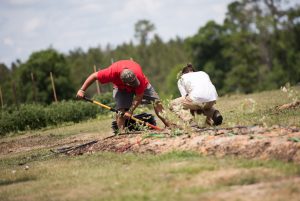
Two employees tend to the land on Sunshine Farm. Photo courtesy of Sunshine Farm.
Georgia agriculture has changed over the last one hundred years, and it now contributes more than 73 billion dollars to the state’s economy. Approximately one in seven Georgians work in agriculture, forestry, or a related field. Farmers have adapted to changing agricultural practices, markets, and technology, and many are experimenting with new ideas, such as developing small-scale sustainable operations and growing specialty crops.
Sunshine Farms in McRae-Helena, a small farm owned and operated by the Hoogland family and two employees, is one such operation. Caitlin Joy Hoogland says the farm began out of tragedy—the death of her mother from breast cancer led her family to move from Idaho to the small town of McRae to be closer to her father.
Hoogland describes the farm as “just weeds” when it was purchased, but the family envisioned a farm that would be “good for humans and for the earth.” After nine months of transforming the fifty-three acres, Sunshine Farms, a chemical- and pesticide-free operation, was born. The farm now grows seventeen varieties of tomatoes, as well as garlic, blackberries, corn, kohlrabi, squash, zucchini, and turnips, and it’s well-known locally for its salad greens.
Hoogland says it is wonderful to be in a tight knit community that supports something new and different. She admits they were told by some that this type of farming would not work, but Hoogland stands by their decision, stating, “I will not feed the public something I would not feed my kids.”
Little Ocmulgee State Park near McRae-Helena traces its beginnings as a project of the Civilian Conservation Corps, a program created by the federal government as part of the New Deal in 1933.

Herman Talmadge was born in 1913 in Telfair County, and served as governor of Georgia for a brief time in early 1947 and again from 1948 to 1954. Talmadge was elected to the U.S. Senate in 1956, where he served until 1980.
Twentieth-century novelist, political speechwriter, and essayist Brainard Cheney spent his childhood in Lumber City in Telfair County. Cheney moved to Telfair County with his family when he was six years old.
Agriculture played a large part in the early economy of Telfair County, with rich soil and hardwood forests that yielded well-diversified crops. Truck farming, dairy and poultry products, turpentine, and berries have been among the county’s largest farm products.
The Ocmulgee River makes up the southern boundary of Telfair County, and it is joined by the Little Ocmulgee River a few miles before it merges with the Oconee River. In the area known locally as “The Forks,” the Ocmulgee River and the Oconee River become the Altamaha River and complete the tideland descent to Georgia’s coast at Darien.
The New Georgia Encyclopedia is the first state encyclopedia to be conceived and designed exclusively for publication online. This authoritative resource contains original content and helps users understand the rich history and diverse culture of Georgia’s still-unfolding story.

